-
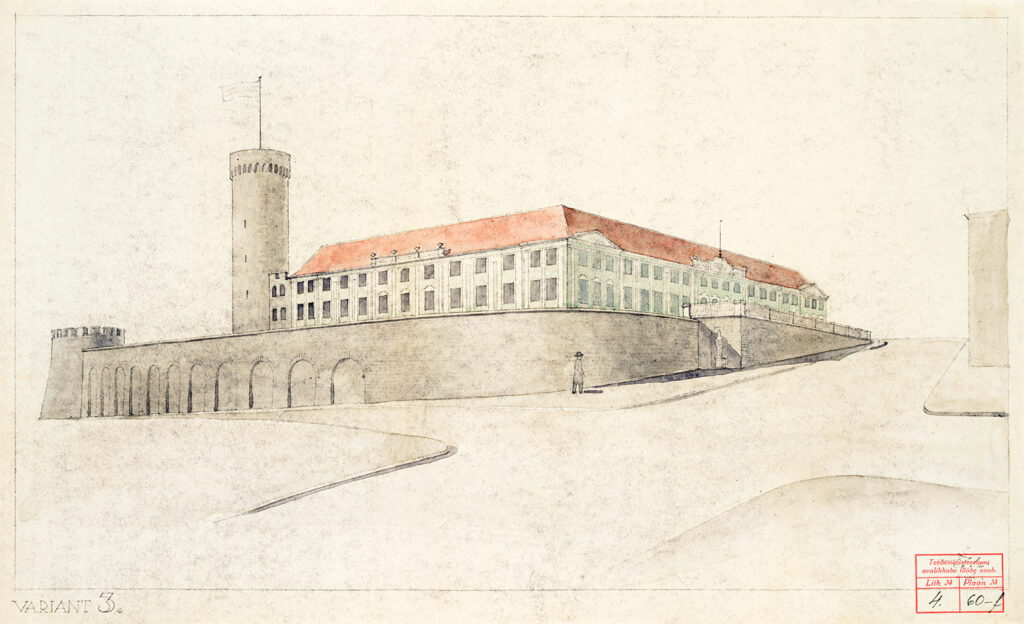
-
Version 3 of the reconstruction of Toompea Castle and Gardens. Alar Kotli
Alar Kotli, 1933–1936. EAM 2.11.15
Reconstruction of the Toompea Castle and the castle garden
The aspiration for representability that began in the second half of the 1930s made its way to architecture via state buildings, manifesting in the use of traditional forms and details. The Estonian government, which had centred around Toompea, reconstructed the southern wing of Toompea Castle and the Governor’s Garden in front of it, opting for a Neo-Baroque style that harmonised with the 18th-century Late Baroque look of the front of the castle. The supporting wall of the Governor’s Garden also received a fresh look. The Coloured copy in watercolour technique was added to the museum collection in 1991. Text: Sandra Mälk
-
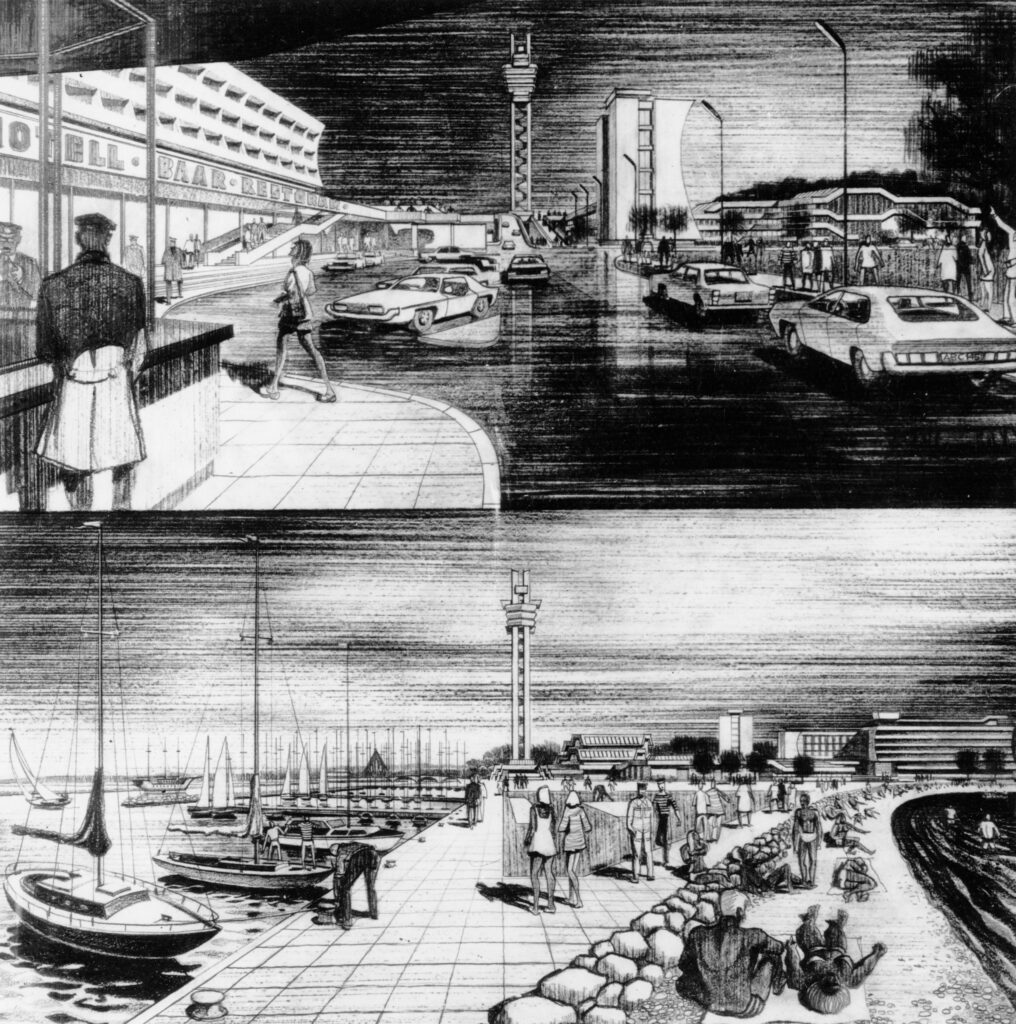
-
Visions of Tallinn Olympic Sailing Center
Mart Port, 1972–1973. EAM 52.4.2
Visions of Tallinn Olympic Sailing Center
Major design work preceded the sailing regatta of the 1980 Olympic Games in Tallinn. The Pirita estuary was redesigned to serve the public and sailors. As the local architects had little experience in creating a building complex that meets the requirements of the Olympic Games, the then city architect Dmitri Bruns decided to travel to Kiel, Germany, where the 1972 Olympic regatta was held, together with Mart Port, chief architect of the Estonian Project, and Urmo Kala, deputy chairman of the sports committee. There, with the kind assistance of the German colleagues the group got acquainted with the construction of the Olympic Sailing Center in Schilksee. The knowledge gained allowed us to announce an architectural competition in 1973 to find a project for the Pirita Sailing Center in which 12 works were submitted. The accompanying visualization comes from an album of Mart Port’s works and was probably part of a set of projects submitted to the competition but not awarded. The hotel has a hotel-bar-restaurant for athletes and guests at the forefront, and of course the Olympic light tower is centrally located in the complex. Like the Schilksee sailing center, the buildings have been built in stages. While in the lower picture the pier edge is used by holidaymakers, in the upper picture the tone is set by cars, which are probably influenced by Western magazines. The design features modern American cars, including the sporty-looking Dodge Challenger. The album was donated to the museum by Heldi Toom in 2014. Text: Sandra Mälk
-
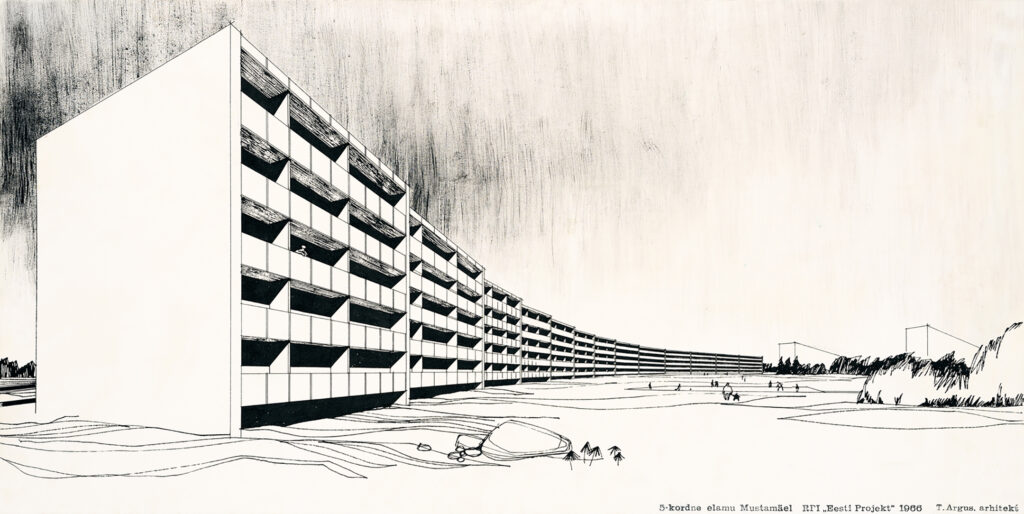
-
Design of an apartment building in the Mustamäe II microdistrict. Tiiu Argus, 1966
Tiiu Argus, 1966. EAM 4.2.3
Five-storey apartment building in Mustamäe, Tallinn
The Mustamäe district, which was erected in Tallinn in the 1960s, was divided up into microdistricts that were designed to accommodate 6,000–10,000 residents. The monolithic form of the panel apartment blocks designed for the second microdistrict is based on the development of prefabricated panels, permitting the construction of buildings with five or more storeys, not just four storeys like before. In the context of the depreciated housing options at the time and before the microdistricts became dormitory suburbs, the first panel apartment blocks that dominated the landscape looked innovative. They were thought to display a community effect and bring neighbours closer together. This ink drawing was given to the museum by design office Eesti Projekt in 1992. Text: Sandra Mälk
-
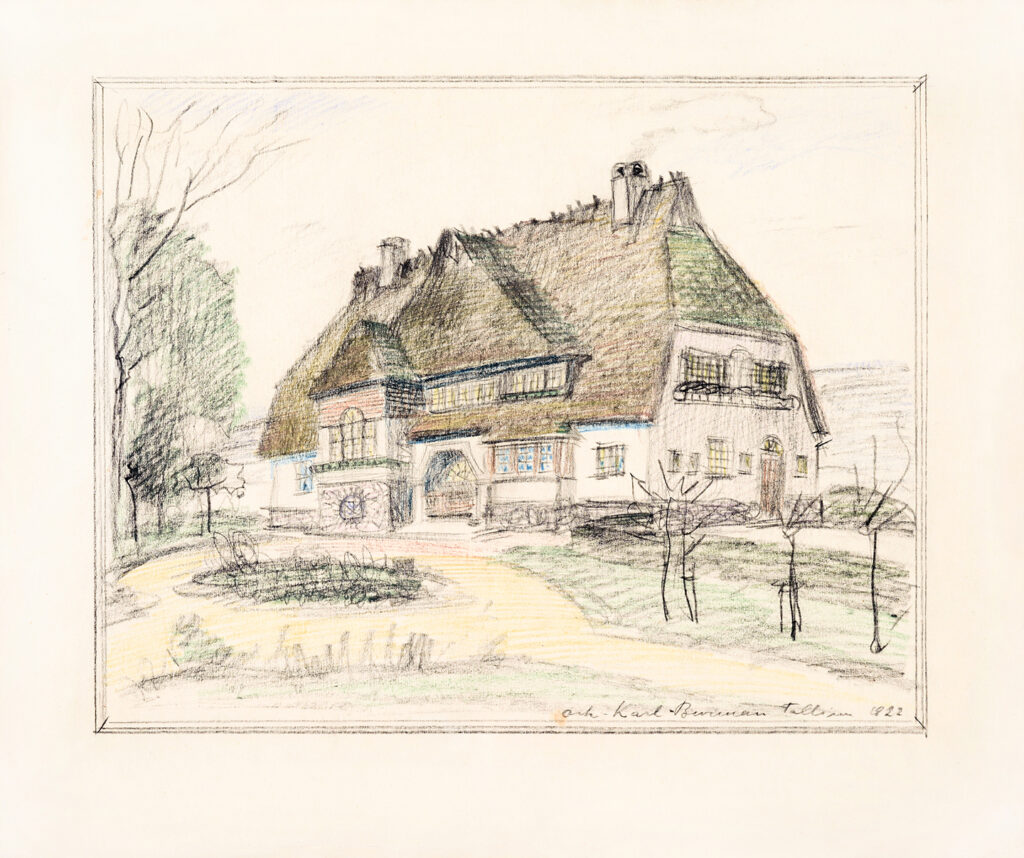
-
Drawing of August Hanko’s residence, 1922. Karl Burman
Karl Burman senior, 1922. EAM 2.2.695
Hanko’s house in Tartu County
The drawing depicts a dwelling in a farm in Kambja owned by journalist and entrepreneur August Hanko. At the time, Karl Burman favoured National Romanticism and drew inspiration from traditional Estonian farm architecture, using poetic elements to mitigate its practical nature. Burman’s oeuvre includes repeated elements in the form of bay windows, porches and a high-hipped thatched roof. Small grid windows of different sizes and shapes are also common to his work. As is characteristic to the style, Burman avoided excess practicality in the arrangement of space, placing a spacious hall in the centre of the layout and the living quarters surrounding it. The project was never realised.
Text: Sandra Mälk
-
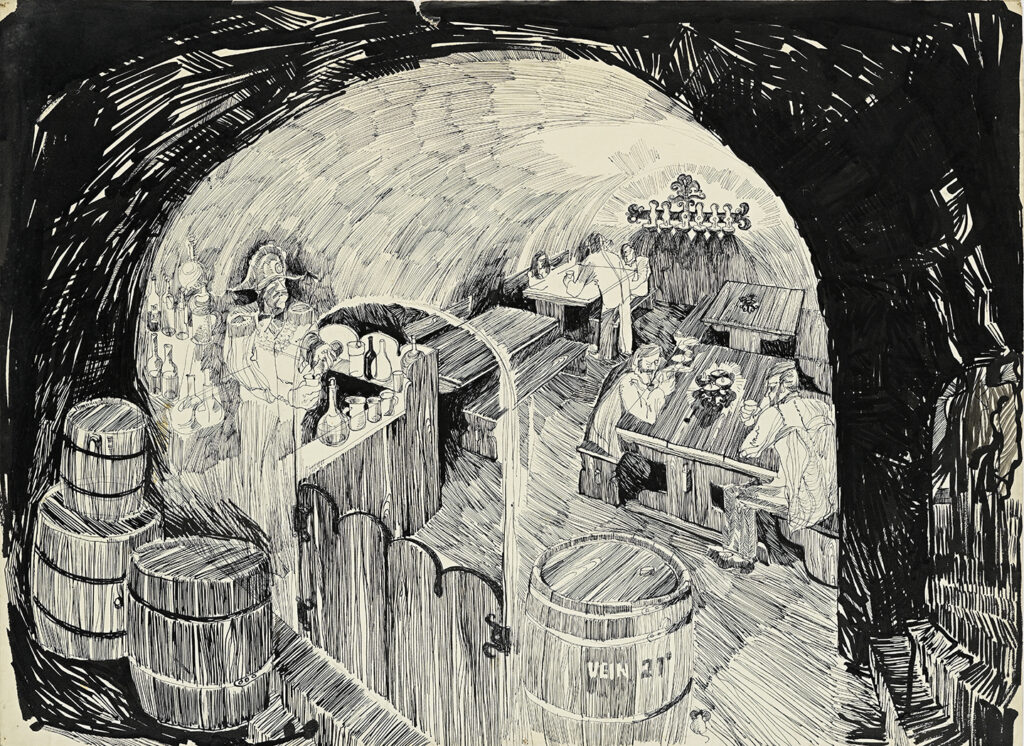
-
Interior design of Café Neitsitorn (Maiden Tower) in Tallinn. Aala Buldas
-
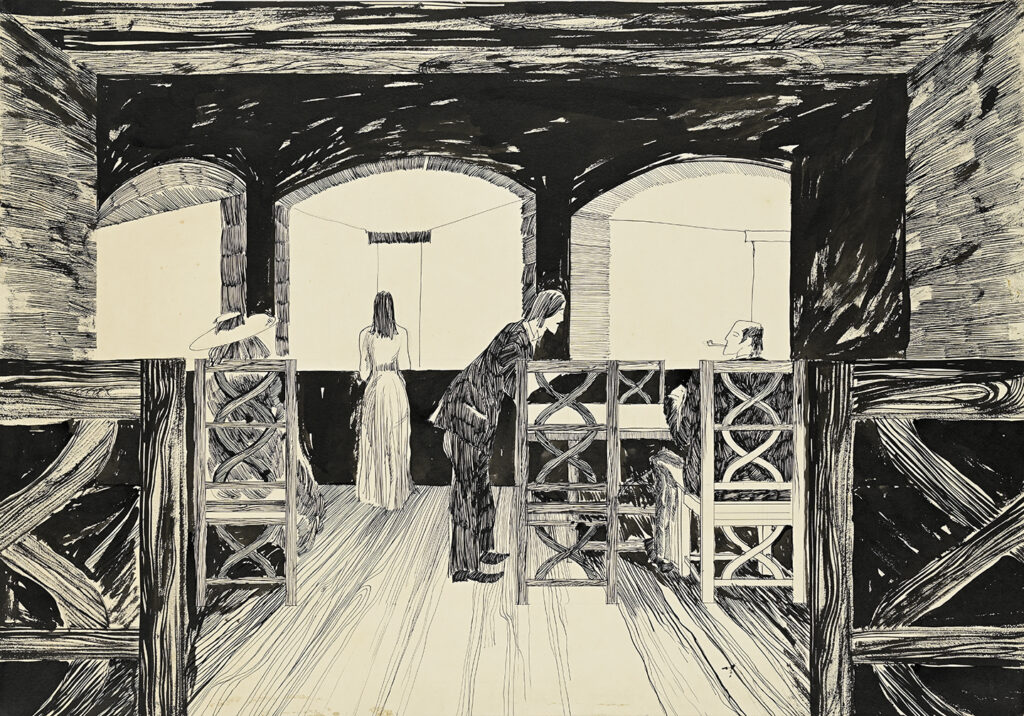
-
Interior design of Café Neitsitorn (Maiden Tower) in Tallinn. Aala Buldas
Interior architect Aala Buldas, 1970–1980. EAM 4.7.17
Café Neitsitorn (Maiden Tower)
One of the most unique defensive towers of the Tallinn city wall, the quadrilateral Neitsitorn (Maiden Tower) was restored in the 1970s. The Maiden Tower together with Kiek in de Kök were defensive structures of crucial importance in the defense of medieval Tallinn. However, after the loss of the status of Tallinn as a fortress city, the centuries-long defense function of the wall towers changed, and in the 19th century the wall towers were rebuilt into dwellings, as did the Maiden Tower. The two-storey residential building became a home for renowned artists and writers, whose apartments had several studio rooms. In the early 1970s, field research on the Tallitorn (Stable Tower) and the Maiden Tower began in order to find a public function for the building. The work was encouraged by the forthcoming Olympic regatta. During the reconstruction of the Maiden Tower, about half of the structure was rebuilt almost as new. The building was given a new floor, underground utility rooms and an impressive glass wall on the Old Town side. The Café Neitsitorn was situated in the new premises, which opened its doors to the public in 1980 and immediately became a big hit. The authors of the tower’s reconstruction design were an architect Tiina Linna, an art historian Villem Raam, and the café’s interior design was made by Aala Buldas. In 2022, the drawings were donated to the museum by Eva Mölder from the restoration company Vana Tallinn. Text: Sandra Mälk
-
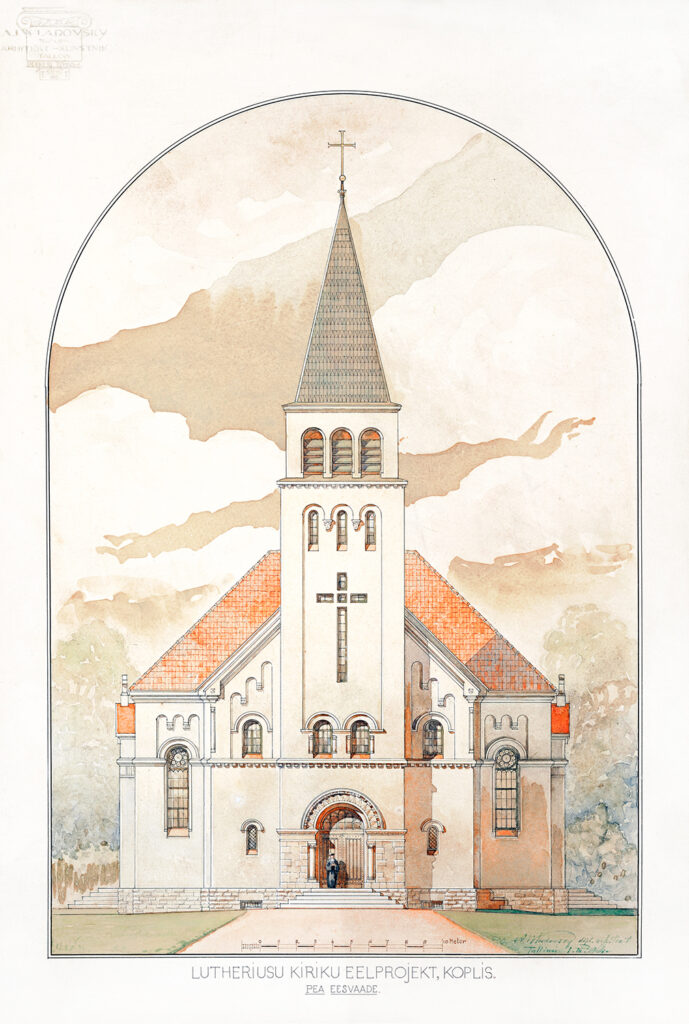
-
Preliminary project of the Lutheran Church in Kopli, 1944
Aleksandr Wladovsky, 1944. EAM 3.4.56
Lutheran church in Kopli, Tallinn
This church is a special milestone in church architecture, as one of the last designed sacral buildings before the Soviet occupation in 1944, which denied religion on an ideological basis. The construction of the Lutheran church was planned in the Bekker settlement in the late 1930s, when the congregation rooms proved to be too small for the expanding Kopli industrial settlement. Back then the area plan for the entire city district needed to be prepared before the church building could be designed. The location of the church was to be close to the Kopli Cemetery, on the edge of a new garden suburb. The preliminary project in watercolours was donated to the museum in 2012 by Hilja Väravas. Text: Sandra Mälk
-
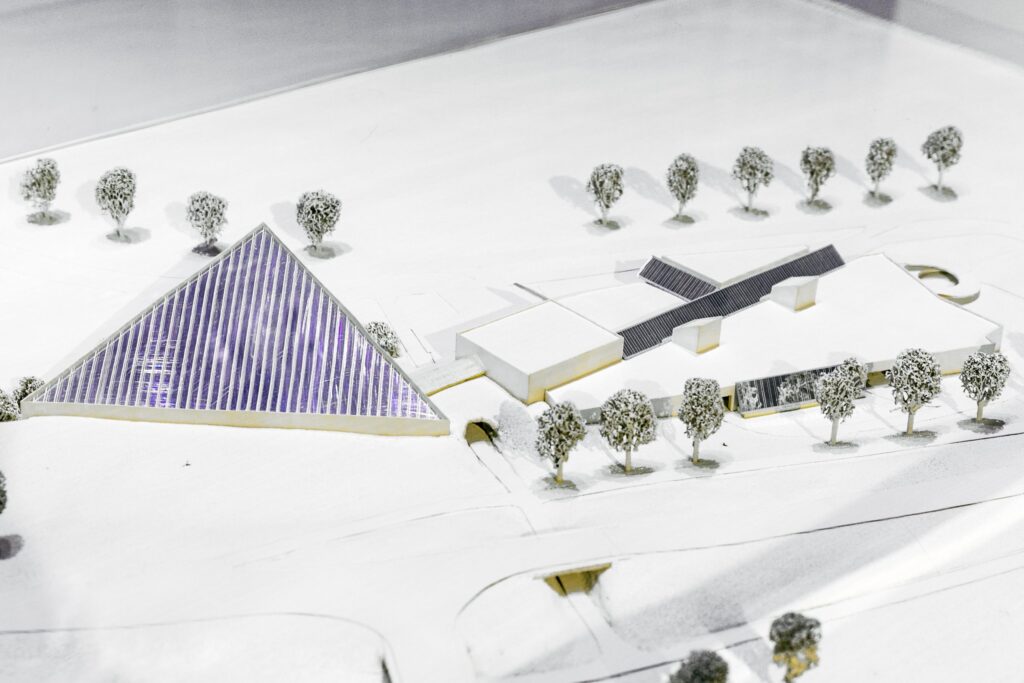
-
Shopping centre in Rovaniemi, Mai Šein
-
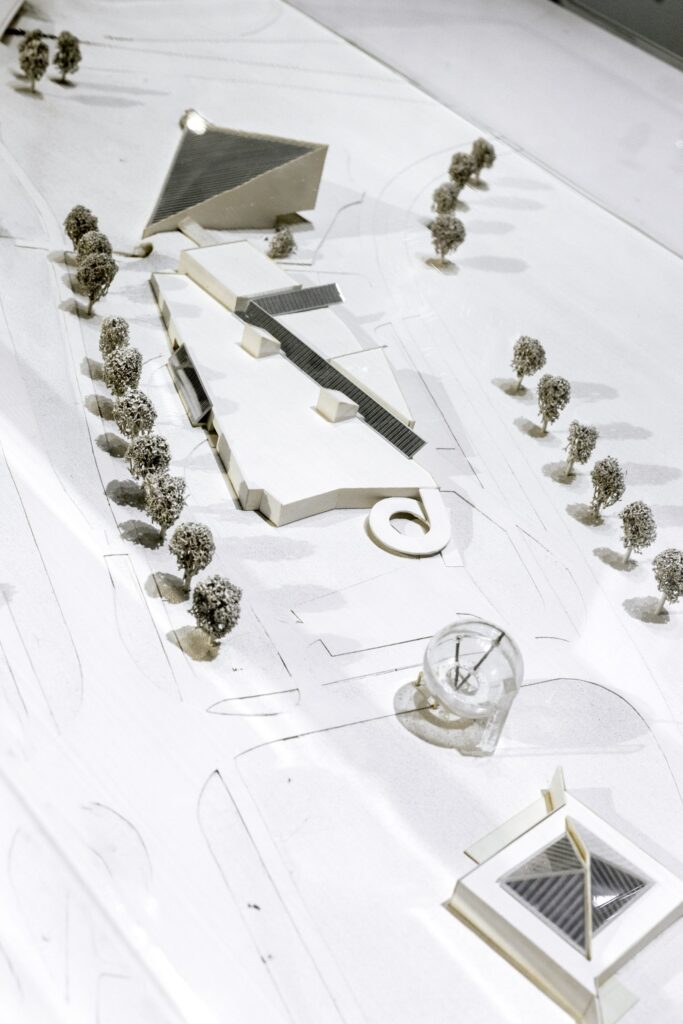
-
Shopping centre in Rovaniemi, Mai Šein
Mai Šein, 1990–1991. EAM MK 251
EMA 30 / Tiny tour of models: Shopping centre for Rovaniemi
In 1990, Rovaniemi County organised a competition for the construction of a shopping centre and hotel complex in Rovaniemi opposite the Arktikum Science Centre across the Ounasjoki River. The centre was intended to house the county government, a hotel, shopping centre and market. The Arctic Circle and Santa Claus Village, a couple of kilometres away, were going to be marked with a special gateway. Architecture firms from Rovaniemi, Oulu and Kemi were invited to participate in the competition. The competition was won by architect Mai Šein, representing the Finnish architectural firm Poskiparta OY. Mai Šein: “I associate Lapland with mountains, so I made a large pyramid-shaped hotel and for the gate I planned a giant openwork globe, positioned above the driveway. The two polar circles were marked; the Antarctic Circle was a footpath for walking along, and the city of Rovaniemi was marked on the Arctic Circle. The adjacent area was an empty site and the participants had to make suggestions about how it could be used. I designed a square building and called it the Nabatorium. A granite wall divided the building diagonally in two – on one side was the South Pole with penguins, on the other the North Pole with polar bears.” Due to an economic downturn, the complex was never built. Mai Šein donated the model to the Estonian Museum of Architecture in 2019. Text: Anne Lass


















